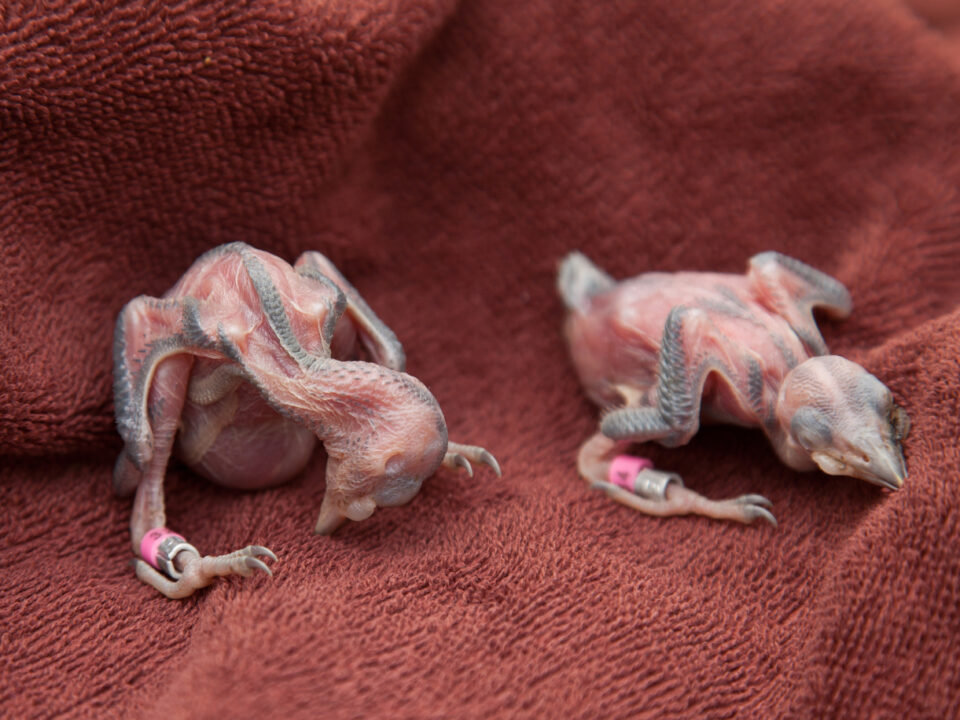Deciphering the winter composition of sharp-tailed sparrows
Moving Woodpeckers
January 5, 2016Eagles rarely gamble during the breeding season
January 7, 2016
The sharp-tailed sparrow complex is a superspecies that includes two species (Nelson’s and saltmarsh sharp-tailed sparrows) and five subspecies. The subspecies have distinct breeding ranges and include the “Acadian” sparrow that nests from Quebec to Massachusetts, the “James Bay” sparrow that nests along the southwestern margin of James Bay, the “Nelson’s” sparrow that nests in the northern Great Plains, the “north-Atlantic” saltmarsh sparrow that nests along the coast from Maine to New Jersey, and the “mid-Atlantic” saltmarsh sparrow that nests along the coast from New Jersey to Virginia. Although these forms breed in far-flung locations, during the winter months they all converge and form mixed flocks along the mid- and south-Atlantic coast.
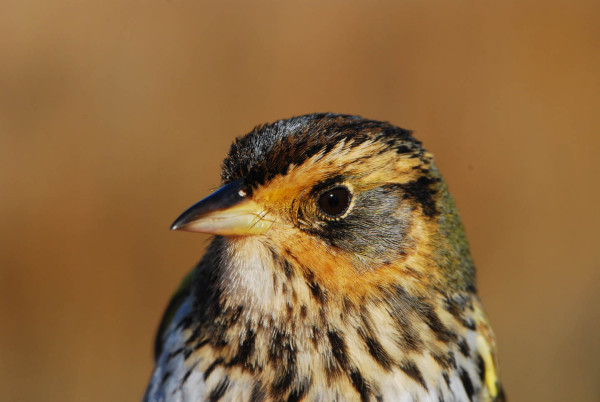
Mid-Atlantic saltmarsh sparrow captured in Virginia. This form has a very limited breeding range, is of high conservation concern and is the least abundant during winter in the marshes sampled. Photo by Bryan Watts.
We know surprisingly little about the composition and distribution of saltmarsh sparrow forms during the winter months. The information gap is partly due to their winter ecology. Sharp-tails utilize remote marsh habitats that are either not accessible or not preferred by the birding public, and they occur in low densities within vast marshes. Even when encountered, they provide only fleeting glimpses as they pop up briefly in marsh grass. Although the two species are readily discernable for experienced birders, the subspecies are not. Clarifying the winter range of this species complex is of particular interest because all forms are saltmarsh obligates during the winter period, and as such are confined to a thin veneer of tidal habitat that is being subjected to increasing threats from sea-level rise.
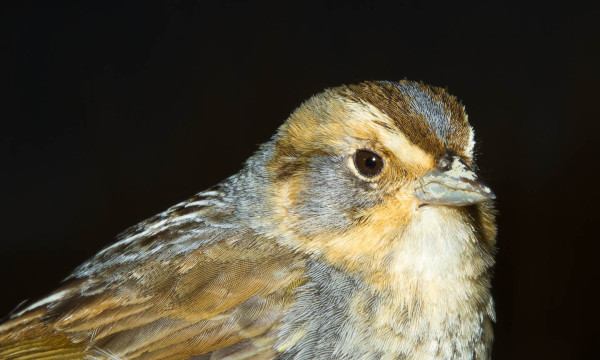
James Bay Nelson’s sparrow captured in Virginia. This form was of equal abundance as the other two Nelson’s forms in the marshes sampled. Photo by Bryan Watts.
Our perception about winter distribution of sharp-tails comes primarily from a careful compilation of museum specimens made by Greenlaw and Woolfenden in the early 2000s. They identified the birds to subspecies and examined the distribution of collection sites. The underlying assumption is that the distribution of where collectors worked reflects the distribution of subspecies. However, from a sample of more than 660 birds only 25 specimens were available north of North Carolina and only 9 of these were from Virginia. The suggestion that sharp-tails are relatively uncommon north of the Carolinas in winter does not comport with the experience of researchers working in the mid-Atlantic.
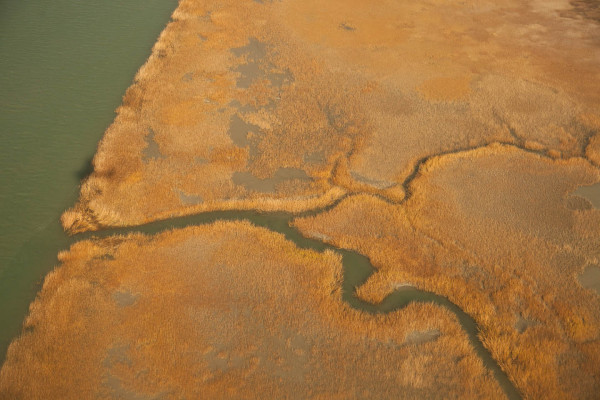
Winter habitat of the sharp-tailed sparrow complex in coastal Virginia. Photo by Bryan Watts.
Between 2006 and 2014, CCB worked to investigate the winter bird community within 24 tidal marshes in coastal Virginia. One objective for this work was to better understand the abundance and composition of the sharp-tail complex north of the Carolinas. The work, led by Fletcher Smith, resulted in the capture and identification of more than 1,000 sharp-tailed sparrows. CCB recently published a paper in the Wilson Journal of Ornithology entitled “Winter composition of Nelson’s sparrow and saltmarsh sparrow mixed flocks in coastal Virginia.” This paper follows an earlier treatment of plumage differences between the five subspecies published by Fletcher in North American Birds (Subspecies of saltmarsh sparrow and Nelson’s sparrow).
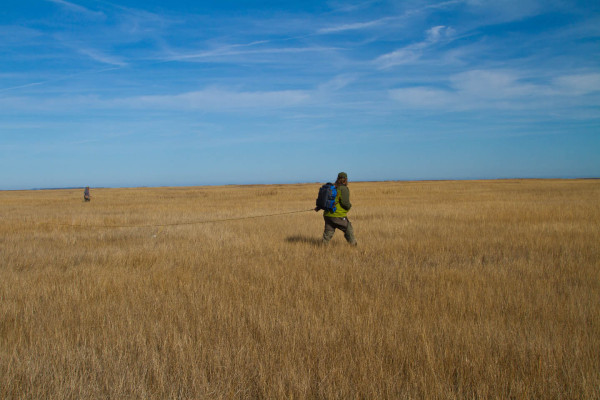
Fletcher Smith (right) and Zak Poulton (left) pull a drag line through a marsh in Gloucester County, Virginia to survey sharp-tailed sparrows. Photo by Bryan Watts.
Results of the fieldwork demonstrate that sharp-tailed sparrows are actually fairly common in Virginia saltmarshes and that all five subspecies co-occur and readily form mixed flocks during high tide events. The north-Atlantic saltmarsh sparrow was the most common form, accounting for 45% of all birds identified. The three Nelson’s sparrow forms were equally common and collectively accounted for 47% of the subspecies identified. The highly restricted mid-Atlantic saltmarsh sparrow was the least common, accounting for only 8% of birds. Contrary to current dogma, Nelson’s and saltmarsh sparrows are equally common in Virginia marshes. Subtle differences in habitat use between these species may be just as important as geography in understanding their distribution during winter.
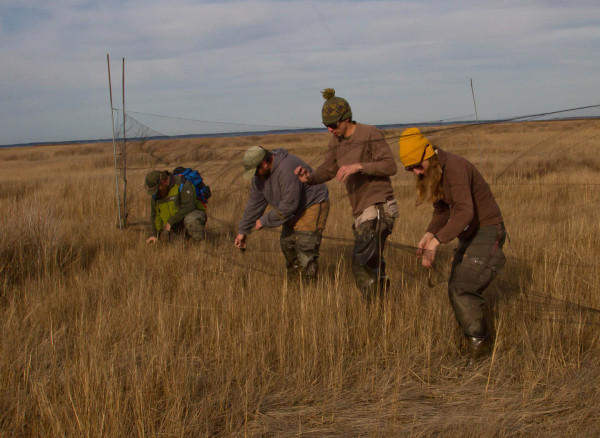
Fletcher Smith, Zak Poulton, Chance Hines and Laura Duval (left to right) extract a flock of sharp-tailed sparrows in a tidal salt marsh during the winter of 2014. Photo by Bryan Watts.
This work extends our understanding of the ecology and winter distribution of sharp-tailed sparrows and has implications for their conservation. Due to their complete dependence on tidal marshes, these specialized sparrows sit on the front lines of impacts due to climate change. The mid-Atlantic region is experiencing some of the highest rates of sea-level rise on the continent. The marshes in the region appear to be much more significant to the future of the sparrows than previously understood.
Written by Bryan Watts | bdwatt@wm.edu | (757) 221-2247
January 6, 2016
Related posts
Adult female from Elkins Chimney territory. Both the female and male were lost from this site between 2024 and 2025 nesting seasons and were not replaced. This territory has been occupied since 1995. Five territories were vacated between 2024 and 2025 along the Delmarva Peninsula in VA. Photo by Bryan Watts

